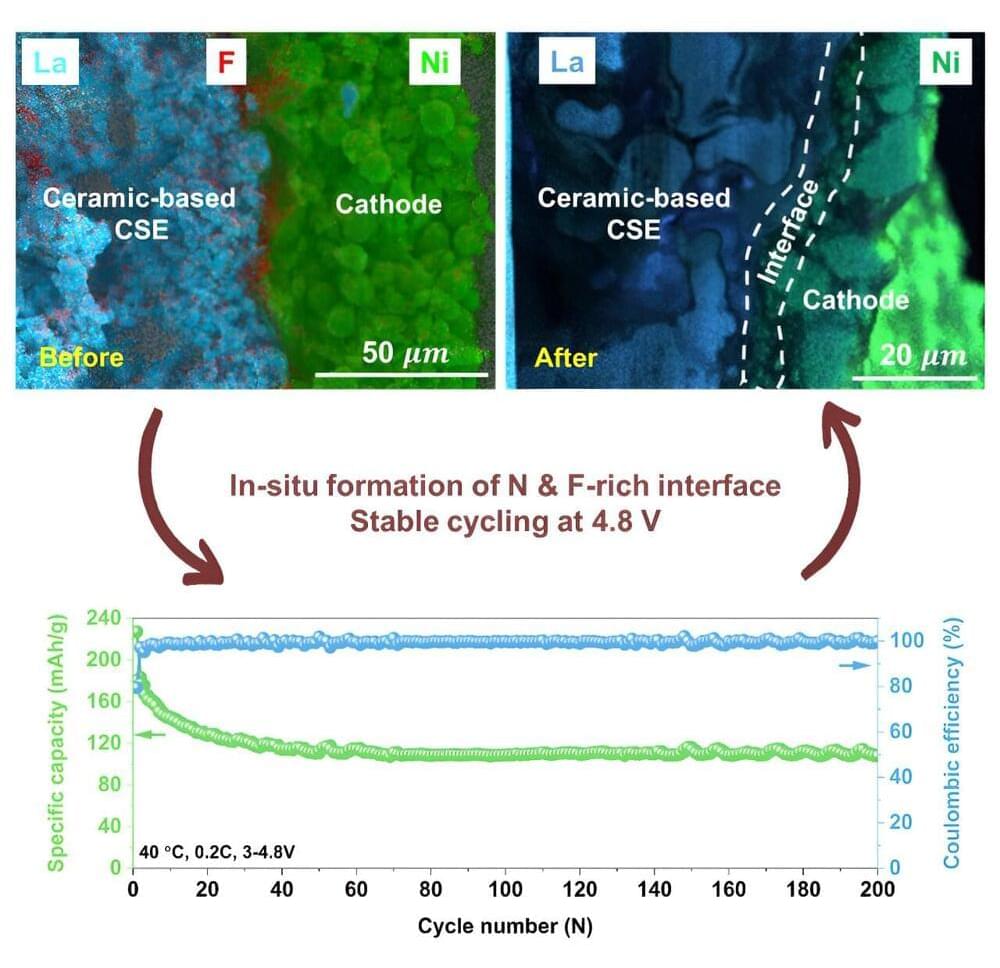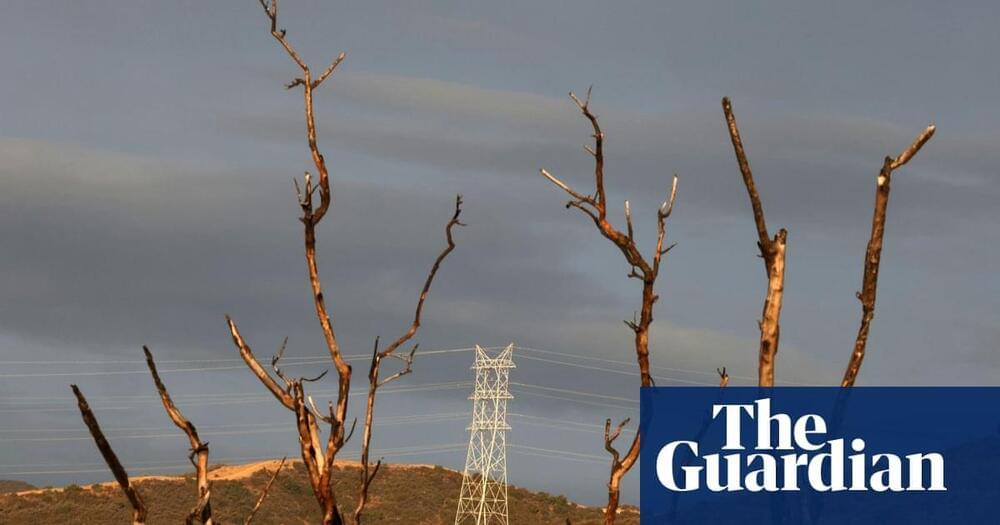Tesla added more market value Thursday than the combined valuations of top U.S. competitors Ford and General Motors.



The demand for lithium, essential for powering sustainable technologies, is rising quickly, yet current methods leave up to 75% of the world’s lithium-rich saltwater sources inaccessible.
With some predicting global lithium supply could fall short of demand as early as 2025, the innovative technology – EDTA-aided loose nanofiltration (EALNF) – sets a new standard in lithium processing. The technology uniquely extracts both lithium and magnesium simultaneously, unlike traditional methods that treat magnesium salts as waste, making it smarter, faster and more sustainable.
The work, co-led by Dr Zhikao Li, from the Monash Suzhou Research Institute and the Department of Chemical and Biological Engineering, and Professor Xiwang Zhang from the University of Queensland, promises to meet the surging demand for lithium and paves the way for more sustainable and efficient extraction practices.

A research team led by Professor Bonghoon Kim from DGIST’s Department of Robotics and Mechatronics Engineering has developed a “3D smart energy device” that features both reversible heating and cooling capabilities. Their device was recognized for its excellence and practicality through its selection as the cover article of the international journal Advanced Materials.
The team collaborated with Professor Bongjae Lee from KAIST’s Department of Mechanical Engineering and Professor Heon Lee from Korea University’s Department of Materials Science and Engineering.
Heating and cooling account for approximately 50% of the global energy consumption, contributing significantly to environmental problems such as global warming and air pollution. In response, solar absorption and radiative cooling devices, which harness the sun and outdoor air as heat and cold sources, are gaining attention as eco-friendly and sustainable solutions.

The reason? While sunny regions naturally provide enough light to grow crops, areas with colder winters often need grow lights and greenhouses part of the year. This increases energy consumption, logistical headaches, and ultimately, food costs.
In their paper, Jiao and colleagues argue for a new method that could dramatically revamp farming practices to reduce land use and greenhouse gas emissions.
Dubbed “electro-agriculture,” the approach uses solar panels to trigger a chemical reaction that turns ambient CO2 into an energy source called acetate. Certain mushrooms, yeast, and algae already consume acetate as food. With a slight genetic tweak, we could also engineer other common foods such as grains, tomatoes, or lettuce to consume acetate.
NASA recently evaluated initial flight data and imagery from Pathfinder Technology Demonstrator-4 (PTD-4), confirming proper checkout of the spacecraft’s systems including its on-board electronics as well as the payload’s support systems such as the small onboard camera. Shown above is a test image of Earth taken by the payload camera, shortly after PTD-4 reached orbit. This camera will continue photographing the technology demonstration during the mission.
Payload operations are now underway for the primary objective of the PTD-4 mission – the demonstration of a new power and communications technology for future spacecraft. The payload, a deployable solar array with an integrated antenna called the Lightweight Integrated Solar Array and anTenna, or LISA-T, has initiated deployment of its central boom structure. The boom supports four solar power and communication arrays, also called petals. Releasing the central boom pushes the still-stowed petals nearly three feet (one meter) away from the spacecraft bus. The mission team currently is working through an initial challenge to get LISA-T’s central boom to fully extend before unfolding the petals and beginning its power generation and communication operations.
Small spacecraft on deep space missions require more electrical power than what is currently offered by existing technology. The four-petal solar array of LISA-T is a thin-film solar array that offers lower mass, lower stowed volume, and three times more power per mass and volume allocation than current solar arrays. The in-orbit technology demonstration includes deployment, operation, and environmental survivability of the thin-film solar array.


Researchers at McGill University have made a significant advance in the development of all-solid-state lithium batteries, which are being pursued as the next step in electric vehicle (EV) battery technology.
By addressing a long-standing issue with battery performance, this innovation could pave the way for safer, longer-lasting EVs. The findings are published in the journal Cell Reports Physical Science.
The challenge lies in the resistance that occurs where the ceramic electrolyte meets the electrodes. This makes the battery less efficient and reduces how much energy it can deliver. The research team has discovered that creating a porous ceramic membrane, instead of the traditional dense plate, and filling it with a small amount of polymer can resolve this issue.

1GITEX Global 2024 and IROS 2024 became true gateways to the future of technology, bringing together the most advanced innovations in artificial intelligence, robotics, and transportation under one roof. At the forefront of GITEX was the unique Nissan Hyperforce concept, an electric vehicle with an incredible 1,360 horsepower, capable of accelerating from 0 to 100 km/h in just 2 seconds. This electric supercar not only stunned with its speed but also with its futuristic design, reminiscent of the iconic Batmobile. With its advanced driving modes, R and GT, drivers can switch between a sporty and comfortable driving experience.
👉For business inquiries: [email protected].
✅ Instagram: / pro_robots.
0:00 Exhibitions in the United Arab Emirates.
0:34 GITEX GLOBAL 2024
0:47 Nissan Hyper Force supercar.
1:43 Italdesign’s Quintessenza concept car.
2:39 Ameca robot.
3:15 Robot bartender.
3:38 Airscooter by Zapata.
4:13 Autonomous Patrol of the Future by Dubai Police.
5:09 Tesla Cybertruck.
6:01 All-terrain delivery vehicles from Mobinn.
6:20 Cadillac Electric Flyer.
7:03 Drones by Multi Level Group.
7:32 Xpeng Aeroht Flying Car.
8:18 New humanoid robot Kepler.
8:42 ZainTECH Drones.
9:04 Robo-charging electric cars.
9:43 Odigo robot with AI
10:26 IROS 2024
11:02 Obstacle course for four-legged robots.
11:41 Robofootball on IROS 2024
12:32 High Torque Robotics.
13:03 Unitree robots.
13:39 Nimble Direct Drive Robots.
14:16 Elephant Robotics.
14:47 Humanoid robots on display.
15:14 DexNex teleoperated system.
15:47 Hubot robot.
In addition, GITEX 2024 showcased the latest flying car concepts. Among them was a model capable of unfolding its blades and taking off in just two minutes, making it the perfect vehicle for fast, seamless travel both on the road and in the sky. The exhibition also featured other cutting-edge innovations, such as autonomous patrol cars equipped with drones and robotic bartenders that serve drinks without lines or fuss.
IROS 2024, held in Abu Dhabi, was equally impressive, giving a glimpse into the future of robotics. Highlights included thrilling competitions between robot dogs and humanoid robots, as well as demonstrations of new robots capable of running, jumping, and even performing complex acrobatic tricks. Autonomous robots designed for patrolling and delivery, capable of navigating routes and recognizing objects in the toughest conditions, also drew significant attention.
Both exhibitions revealed how robotics and AI are increasingly influencing our everyday lives, offering solutions for safety, transportation, and even entertainment. Unique projects, such as autonomous drones for agriculture and firefighting, and robotic systems for smart cities, are already reshaping urban spaces. With the technologies presented at GITEX and IROS, the future is closer than ever. Subscribe to our channel to stay updated on the latest innovations and events in the world of high-tech.

Researchers at Monash University have developed an artificial intelligence (AI) model that significantly improves the accuracy of four-dimensional scanning transmission electron microscopy (4D STEM) images.
Called unsupervised deep denoising, this model could be a game-changer for studying materials that are easily damaged during imaging, like those used in batteries and solar cells.
The research from Monash University’s School of Physics and Astronomy, and the Monash Center of Electron Microscopy, presents a novel machine learning method for denoising large electron microscopy datasets. The study was published in npj Computational Materials.